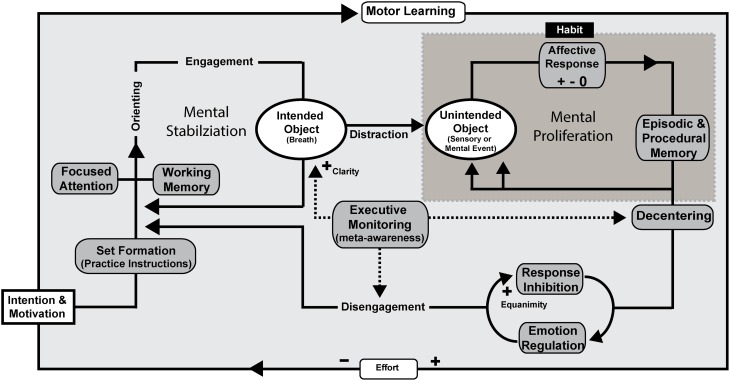Figure 3.
Mindfulness process model—concentrative practice. FA meditation using the breath as the object of focus is illustrated as an example, but the processes are proposed to be the same across concentration styles of practice. Intention is formed along with motivation to practice before an executive “set” is created. Executive set is supported by the working memory system in order to implement and maintain practice instructions. Focused attentional networks are recruited and sustained along with support by component mechanisms including executive monitoring, emotion regulation, and response inhibition. Unintended objects of distraction can include any stimulus available to extero- or interoceptive sensory and mental processes. Affective responses to unintended objects can have a positive, negative, or neutral valence and are likely to proliferate endlessly unless awareness and de-centering promote response inhibition and disengagement. Motor learning provides a framework for automatization and mindfulness skill development. Effortful control is reduced through continued practice. Through practice, awareness itself becomes the object of attention in meta-awareness as the meta-function is acquired as a skill. Clarity, as a form of phenomenal intensity during practice increases as does equanimity, which refers to impartiality reducing later attentional and emotional stages of strategic processing that could potentially involve prolonged sympathetic arousal, cognitive elaboration, or ruminative qualities.

